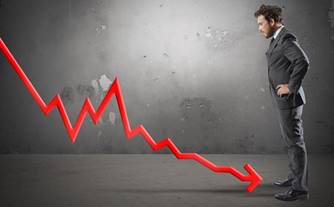Sears’s Chapter 11 bankruptcy filing caught absolutely no one by surprise. The company has been on life support for years.
You will see hundreds of reasons for Sears’s bankruptcy. All of them are at least partially true. The question that you won’t often see addressed is this: Why didn’t sears become Amazon?
Sears was Amazon before there was Amazon
Mail was the internet of the 19th century, and the first Sears & Roebuck catalog appeared in 1893. It sold watches and jewelry. The catalog expanded to include other products in 1894. By 1920, it had included hard goods; appliances; clothing; kits to build your own home; school desks; groceries; automobiles; and even private electric lighting plants.
Sears revenue grew by a factor of 50 between 1895 and 1905. The company had mastered the challenges of distribution while innovating with new product offerings and building an intensely loyal customer base.
Things changed after World War I. The population began its migration to the cities and suburbs. Chain stores such as Macy’s, F.W. Woolworth, and Kmart began to expand. The economy suffered a severe recession from 1920 to 1921. Sears responded by opening its first store in 1925 and quickly grew to 300 stores in 1929.
Fast forward 100 years, and Amazon opened as an online book seller. It grew at a slower rate than Sears in its first few years, but it, like Sears, revolutionized retailing as it moved from selling books to selling everything … including houses. And just like Sears, Amazon is now moving into brick and mortar retail.
Why Sears didn’t make the transition
A lot of the blame belongs to Sears CEO Eric Lampert. He might have been a good investor, but being smart or good at one thing doesn’t make you smart or good at everything.
The truth is that Sears’s demise began well before its illogical choice to merge with Kmart. Results Rule! Build a Culture that Blows the Competition Away, published in 2006, highlighted six choices made by companies that consistently dominate their marketplace. It appears that Sears made the opposite choice at virtually every turn.
1. Tell yourself the truth. Value candor and honesty. Sears and Kmart merged in 2005 with a combined 3,500 stores. The current announcement to close an additional 142 under-performing stores brings them to 894. The company has seen its sales drop every year since 2006. Sears has a history of failed efforts to reinvent the company dating back to 1993. None of them worked. Finally, Sears consistently received low marks from customers on high-quality service.
Yet despite all of the evidence that it was on the wrong path to relevance, Sears doubled down on its cost-cutting strategy. Perhaps the company’s leaders never planned on resurrecting the company. Maybe they were honest behind closed doors about the overwhelming problems and their inability to solve them. Based on their public statements, however, it is reasonable to speculate that they never told themselves (or their investors) the truth about what it would really take to save the company.
2. Focus the energy. Make the main things the main things. Sears was originally known for quality, product availability, and service. Craftsman tools and Kenmore appliances set the standard for excellence. You could order almost anything from a Sears & Roebuck catalog. Sears stores were staffed by friendly people who knew what they were doing.
Things began to change in the 1980’s. Sears decided to be all things to all people and nothing specific to anyone. Rather than invest in the strengths of its brands, the company started offering everyone’s brands. Instead of sticking to retail, it dropped financial services (Allstate, Dean Witter, and Coldwell Banker) into its stores. Most important, Sears allowed its new ventures to drain focus from the performance of its stores.
Amazon, too, has expanded beyond its retail roots. The difference is that Amazon was founded as a tech company that does retail not a retail company that tries to deploy new technology. Sears, in essence, decided to be a conglomerate that happened to have a presence in retail rather than a retail company that looked for ways to serve its customers.
3. Pursue the best over the easiest. Sears sacrificed employee engagement and customer experience for reduced costs. That’s never a good recipe for building an enduring company. By all reports, former CEO and current chairman Eddie Lampert never understood the importance of customer service. In addition, the company didn’t execute on the promises it made to customers. Instead, initiatives such as the Shop Your Way loyalty program introduced in 2009 were complicated and difficult for everyone to navigate. In short, Sears didn’t make the extra effort to pursue what was best for its customers.
Sears’s response to Walmart in the 1990’s is the ultimate example of doing what is easy rather than what’s best. Barbara Kahn, a professor of marketing at the Wharton School, told CNN in 2004 that “Sears and Kmart did not differentiate themselves from the competition. Wal-Mart came along with its great service and low-prices, other retailers started to innovate more with products and service. Sears and Kmart simply trudged along and thought that was good enough.”
Can you imagine Amazon just “trudging along” about anything?
4. Leverage the power of partnerships. Sears, as a company, has been terrible at creating a place where its front-line employees want to help the company succeed. You assume that there will be layoffs when a store is closed, but Sears has been historically negligent with the employees who remain. Reports of no raises reduced hours, and stores operating at dangerously low staffing levels have been common.
Amazon has taken hits for its work environment, too. That said, you can’t ignore LinkedIn’s naming of Amazon as the best place to in 2018.
5. Learn, grow and change every day. Amazon and Walmart combined for 44.67 percent of the online shopping business last year. Sears had 0.7 percent. That statistic alone tells you everything you need to know about why Sears failed and why it missed its opportunity to remain the Amazon of its day. It is not just that the company didn’t see change coming. Sears also has been painfully slow at responding once the need to change becomes evident. Complacency killed Sears. Unless something happens to Jeff Bezos, that won’t happen at Amazon.
6. Have the courage of accountability. Here’s what Eddie Lampert said about the bankruptcy filing in his email to all employees:
“While our plan is delivering for our members, our efforts to become a profitable and more competitive retailer have been affected by a difficult retail environment, unsatisfactory operating performance, and legacy liabilities impacted by historically low interest rates.”
To his credit, Lampert reassured that the company will keep doing business and that everyone—staff and vendors—will be paid. He also reinforces the goal of emerging from Chapter 11 as a more nimble, profitable company.
On the other hand, Sears isn’t the only retailer with legacy liabilities. Every company operates in a difficult retail environment. Many retailers have unsatisfactory performance, and the best ones are open about doing the work to be better.
Sears isn’t going away just yet. It will utilize the Chapter 11 regulations to reorganize. But, operating isn’t the same as excelling. Even if it rebuilds, Sears will never regain its place as a market leader as long as its lack of performance is blamed on something or someone else.
Randy Pennington is an award-winning author, speaker, and leading authority on helping organizations achieve positive results in a world of accelerating change. To bring Randy to your organization or event, visit www.penningtongroup.com , emailinfo@penningtongroup.com, or call 972.980.9857.
This article was first published on LinkedIn Pulse
https://www.linkedin.com/pulse/why-sears-never-became-amazon-randy-pennington/?published=t&fbclid=IwAR2eCiCWJb3M36XWZDekVOsP3ZmaMJN6mM5M1pmq0WgGaL0RolegknwDw9g





